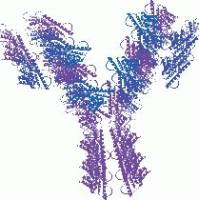Nuclear Transfer in Nonhuman Primates
互联网
603
The nonhuman primate is a highly relevant model for the study of human diseases, and currently there is a significant need for populations of animals with specific genotypes that can not be satisfied by the capture of animals from the wild or by conventional breeding. There is an even greater need for genetically identical animals in vaccine development or tissue transplantation research, where immune system function is under study. Efficient somatic cell nuclear transfer (SCNT) procedures could provide a source for genetically identical nonhuman primates for biomedical research. SCNT offers the possibility of cloning animals using cultured cells and potentially provides an alternative approach for the genetic modification of primates. The opportunity to introduce precise genetic modifications into cultured cells by gene targeting procedures, and then use these cells as nuclear donors in SCNT, has potential application in the production of loss-of-function monkey models of human diseases. We were initially successful in producing monkeys by NT using embryonic blastomeres as the source of donor nuclei and have repeated that success. However, when somatic cells are used as nuclear donor cells, the developmental potential of monkey SCNT embryos is limited, and somatic cell cloning has not yet been accomplished in primates. High rates of in vitro development to blastocysts, comparable with in vitro fertilization controls, and successful production of rhesus monkeys by NT from embryonic blastomeres suggests that basic cloning procedures, including enucleation, fusion, and activation, are consistent with the production of viable embryos. Although modifications or additional steps in SCNT are clearly warranted, the basic procedures will likely be similar to those extant for embryonic cell NT. In this chapter, we describe detailed protocols for rhesus macaque embryonic cell NT, including oocyte and embryo production, micromanipulation, and embryo transfer in nonhuman primates.









